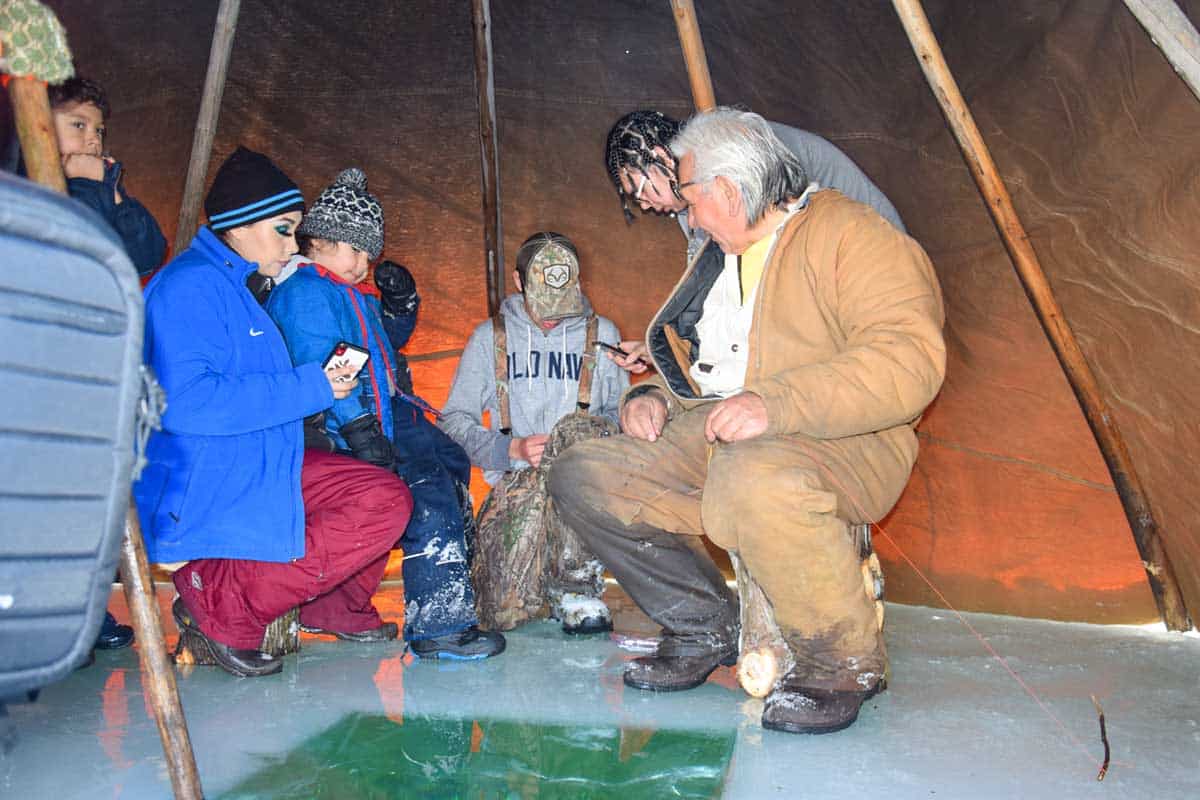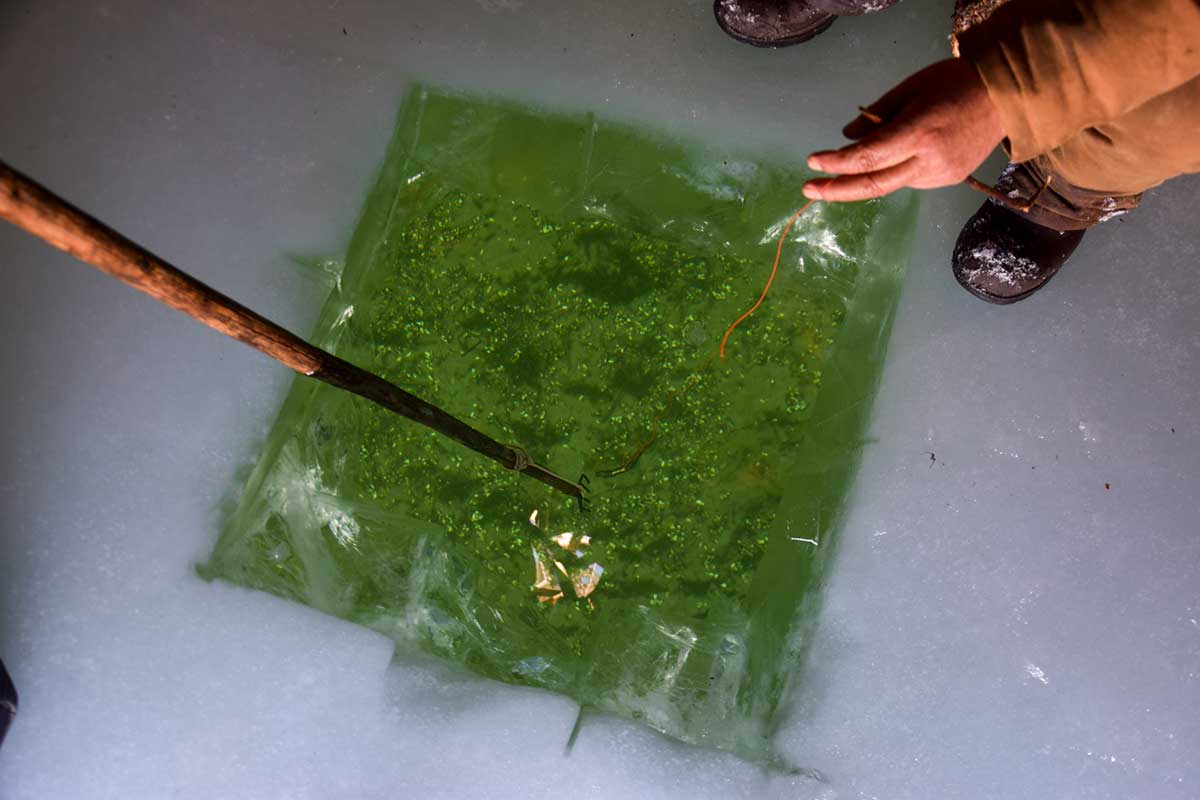SHEGUIANDAH – Bright sunny skies were joined by a complete lack of wind to create the perfect day for trudging out across the ice of Sheguiandah Bay to check on how folks were doing in the small village of ice huts.
The Expositor was fortunate to follow in the footsteps of Reggie and Dawn (Madahbee) Leach as the Island’s favourite power couple headed out for a visit.
“Isn’t this great,” said Ms. Madahbee-Leach, joining some of the participants for a photo-op. “You couldn’t ask for a better day.”
There weren’t a lot of fish being hauled up from the depths below, but there were plenty of cookies, smoked fish, coffee and tea available and the smiles were shining almost as bright as the sun.
Across the bay standing somewhat incongruously was a tall dark brown tipi. Nestled within the tent, seated on a round of firewood and peering over the edge of a three-foot square hole, Sheguiandah elder Gordon Waindubence held court—offering up a teaching on traditional ice fishing techniques.
The ice around the hole was so clear, the ice had the appearance of being only a couple of inches thick. “No,” laughed Mr. Waindubence. “My (chainsaw) bar didn’t even reach all the way through, it’s about 18 inches.” A closer look reveals what appeared to be clear polyurethane was actually the sides of the hole of the ice.
A young helper holds a cord leading down into the depths which was tethered far below to the back of a very large lure. Mr. Waindubence gently coaches the young bait operator on how to make the lure as lifelike as possible. Poised above, an older student grasps the haft of a forked-headed spear.
“I remember fishing like this with my father on Heywood Island where I grew up,” said the elder. “My job was holding the lure; we used live bait or maybe a hollowed out piece of wood carved to look like a perch that was weighted down.”
Mr. Waindubence admits he isn’t that concerned about the catch. “It’s about the teaching,” he said. “But when I was doing this as a child it was all about dinner. If you didn’t catch something, you didn’t eat.” Luckily, Mr. Waindubence and his father made a very good team.

Elder Gord Waindubence, above right, offers teachings on the traditions of ice fishing to Sheguiandah First Nation youth. 
A homemade perch lure is jigged in the depths below with a spear at the ready, the same way Mr. Waindubence fished for his supper, literally, as a boy on Heywood Island.
“We would be out in all kinds of weather, even a blizzard,” he shared. “We didn’t have a setup like this,” referencing the surrounding tipi as he poured himself a hot cup of tea.
The clear water below makes the bay bottom, littered with quagga shells, seem mere inches away. “It’s about 12 feet down,” said Mr. Waindubence. “There’s a drop-off here, that’s why we set up on this spot.”
Should a fish make an appearance, a straight plunge with the spear offers the best hope to capture the fish. “It’s hard to see where the fish really is,” shared Mr. Waindubence. “The fish will come in, but it won’t bite right away. You have to wait until it stops.” Ice fishing is always a matter of patience, but especially so in this case.
Once the fish is speared, the hunter released the spear to travel under the ice. Its weight will help tire the fish and make it easier to haul up into the air. A long bright orange cord is well secured to the fishing spear and is retained by the hunter/fisher.
Getting back onto the land is especially important during these trying times, noted participant Sunset Sagutch. “I was spending way too much time inside,” he laughed. It’s a sentiment shared by Mr. Waindubence who spends much of his time imparting traditional knowledge to younger generations.






